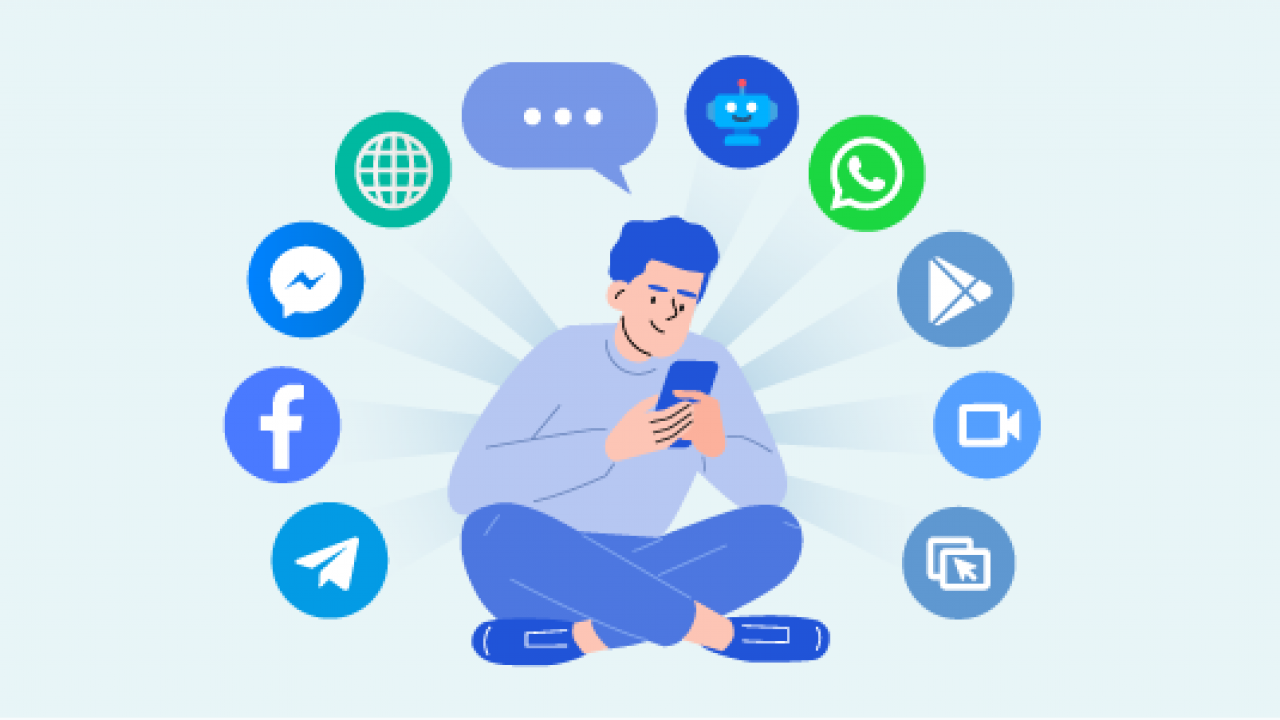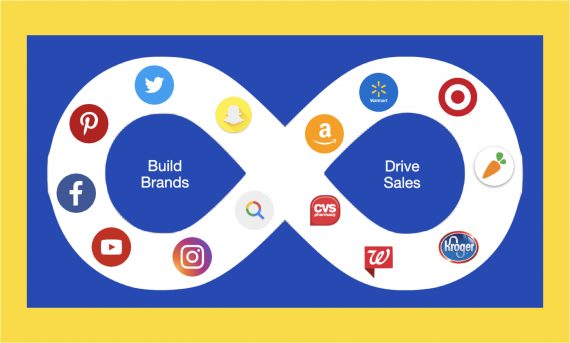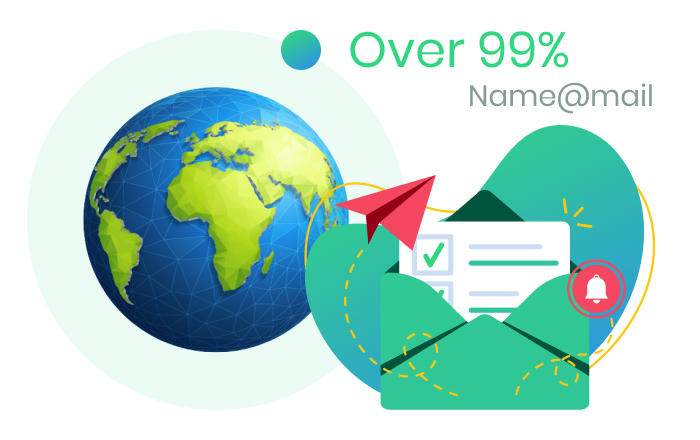If you have email and SMS subscriber lists, you’re likely already reaping the benefits of engaging with your customers.
Both email and SMS offer effective ways of communicating directly with your clients, as you can personalize your messages to gain further benefits that aren’t easily obtainable through other advertising methods.
To maximize the benefits of your email and SMS marketing campaigns, though, it’s wise to adopt an omnichannel strategy. We’ll break down the components of an omnichannel strategy and identify ways to incorporate it into your email and SMS marketing efforts.
Omnichannel Marketing: A Definition
Most companies rely on a combination of channels to advertise and communicate with their customers. Communication mediums can include the organization’s website, social media accounts, physical storefronts, email messages, and SMS marketing texts.
Using multiple communication mediums to reach customers is known as multi-channel marketing. However, some organizations take their strategy further by adopting omnichannel marketing methods.
In an omnichannel marketing strategy, the mediums used to communicate with clients exchange information about the latest interaction.
For instance, a customer who leaves a review on a company’s website will first get an email from the organization thanking them for their input. Later, they might receive a text message marketing offer for 10% off their next purchase as further thanks for leaving a review
Omnichannel aims to personalize communications with customers as much as possible. Most customers prefer companies that use their interactions as a basis for further communications.
With an omnichannel strategy, all communications are seamless, and all interactions are up-to-date. That way, companies can preserve the context of a conversation, website visit, or other interaction across all channels.
Omnichannel marketing is immensely beneficial to companies that adopt it.
According to a report from Twilio, nearly 50% of customers will return to a retailer that provides them with a personalized shopping experience. Even more intriguing is the fact that over 60% of consumers won’t stay loyal to a company that doesn’t provide them with personal attention.
Benefits of Omnichannel Marketing
Omnichannel marketing offers several benefits that companies can gain from, including:
A Better Customer Experience
Omnichannel marketing allows for an optimal customer experience through seamless communication. Companies implementing omnichannel marketing can better understand and support their client’s needs and wants.
Consider an online retailer that sells sweaters and outdoor clothing. They use an omnichannel strategy to track first-party interactions across their various platforms. When a customer logs into their website, they monitor the client’s search behavior to understand what they’re looking for.
Since the customer subscribes to their email and SMS marketing messages, they can easily create an automated communication that sends the client a list of items they might like based on their search history. They can then follow up with an SMS text, providing the customer with a special discount if they decide to make a purchase.
The curated list of recommendations and discounts enhances the customer’s experience, encouraging them to return and purchase with the organization. It also improves the email marketing engagement from your advertising campaigns.
Enhance Brand Recognition
With omnichannel marketing, you’re better positioned to make your brand known to potential customers.
You can use social media for advertising to customers who previously visited your website and target them through pay-per-click (PPC) ads. You can also send regular communications to people who subscribe to your emails and SMS messages.
The more you interact with customers through an omnichannel marketing strategy, the more likely they’ll be to remember your brand when they need something you sell. They’ll also be able to recommend your company to people they know who might be in the market for your products or services.
Increase Revenues
You’ll gain more customers and make more sales through a comprehensive omnichannel marketing strategy. Omnichannel marketing allows you to enhance the customer experience by creating personalized recommendations for your clientele that they may not be aware of.
Customers who enjoy shopping with your company are more likely to return to you for their future needs. As long as you continue offering them a good experience and competitive prices, they’ll have no reason to leave. As such, you’ll gain a long-term revenue stream until your products no longer serve them.
More Customer Engagement
With an omnichannel strategy, you’re more likely to see higher SMS and email marketing engagement levels. Customers who see your social media ads are more likely to view them and like or leave a comment on your post. If you email them, they’ll open the mail to learn about new products or other information.
Higher SMS and email marketing engagement levels can help you retain and attract new customers. If people in your target audience see that your company is popular with their peers, they’ll want to visit you to see what all the buzz is about.
Less Customer Churn
Some organizations are susceptible to “churn,” which is when clients stop buying or using their services. Companies in the subscription industry are more likely to worry about customer churn since it can negatively impact their revenue.
When you engage in an omnichannel strategy, you keep on top of your customer service and ensure that your clients have a positive experience with your organization. Doing so improves their chances of staying with your company rather than leaving you for a competitor.
How to Improve Your Customer Retention Through an Omnichannel Email and SMS Strategy

You can incorporate both email and SMS into your omnichannel strategy, increasing your customer retention rates and enhancing your revenue. Here are a few methods to consider.
Implement Automated and Conversational Messages
You’ll want to offer automated and conversational communication through email and SMS. Both channels allow you to communicate directly with your customers, which you can’t do through social media ads or TV commercials.
Let’s consider an example of an e-commerce retailer:
The retailer has a list of email and SMS subscribers. When new customers subscribe, they receive a welcome email and text from the company. The initial email is generic but includes pictures of popular items in the store.
The consumer shows interest in one of the products and clicks on the link to learn more. However, they don’t make a purchase.
The company has an omnichannel system that automates SMS notifications for consumers who visit the website without making a purchase. They send an automatic SMS to the customer a day later, offering a one-time 20% discount exclusively for the product they were browsing.
Since the savings are significant, the customer decides to purchase the product. Later on, they receive automated shipment notifications through email and text.
Once the client receives the product, they determine it’s not the right fit for their needs. They start a one-on-one conversation through the company’s SMS messaging system, inquiring about the return policy. A customer service agent quickly joins the conversation and tells them how to return the product.
As you can see, the customer and organization benefit from automated and conversational messaging through email and SMS — the company earns an initial sale, while the customer receives product recommendations and individualized support when they decide the product isn’t right for them.
The company can continue nurturing the relationship by providing further recommendations and ensuring that the customer has a positive experience.
Personalize Your Communications
Both email and SMS messaging offer a unique opportunity for organizations to personalize their communications. Since you’re communicating exclusively with a single consumer, you can tailor your emails or SMS messages to meet their preferences.
You can start your customization efforts when your clients first subscribe to your communications by allowing them to describe what they’re most interested in hearing about.
For example, if you own a sports apparel store, you might include an option on your opt-in form that prompts clients to name their favorite sports team. You can use this information to personalize your emails, sending them notifications of new products that incorporate their favorite sports teams.
You can customize your text message marketing communications similarly. For instance, you might send a promotional text advertising 20% off team sports apparel and products.
Ideally, you’ll save first-party data from your consumers whenever they read an email, open a text, or search your site. Over time, you’ll build a database of your customer’s preferences and browsing behavior to better target their needs.
Take Advantage of the Post-Purchase Sales Funnel
Picture this: your customer buys a brand-new desk from your online office supply store. You collect their personal information, and they opt into your email and SMS messages. Once you prepare the desk for shipment, you notify them that their product is coming.
You remain in communication throughout the shipping process and send them a final notification when the desk arrives.
However, your marketing activities shouldn’t stop with product delivery. Instead, you can use the post-purchase period to recommend other products and confirm that the desk met their expectations.
For instance, a few days after the desk is delivered, you could email them asking them to review the product and suggesting a few other items they might like for their home office.
If the customer reviews their desk, send them an email thanking them for their review. You can also include a special discount if they need to purchase any additional items.
You’ll need to set up automated emails to truly benefit from the post-purchase sales funnel. Each email should prompt a specific action from the customer, like leaving a review or browsing additional products.
Incorporate Customer Referral Programs
Businesses thrive through word-of-mouth recommendations.
Customers who like your organization will naturally want to talk about their positive experiences with your company. You can encourage word-of-mouth recommendations by implementing a customer referral program.
To start the process, you’ll offer your existing clients a particular discount or gift if they successfully refer a family member or friend who purchases a product from you.
For instance, you might send an SMS or email with a unique link for client referrals. If the customer shares the link and someone else uses it to buy from you, you’ll reward your client with a promotional discount or free item.
You can also reward your best customers through a loyalty program. Whenever they buy a product from you using identifiable information, like their email address or phone number, you’ll provide them with loyalty points.
Customers can redeem their loyalty points on future purchases with your company. For instance, if they accumulate 100 loyalty points, they can use them for $10 off their next purchase.
An Omnichannel Marketing Strategy Can Revitalize Your Marketing Efforts

Through email and text message marketing, it’s possible to grow your revenue and increase brand loyalty among your customers. For the best results, adopt an omnichannel strategy that personalizes your advertising efforts and enhances the customer experience.
Are you searching for a platform to support your email and SMS marketing activities? Find out how Contact Consumers can benefit your organization.




